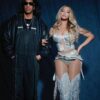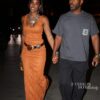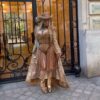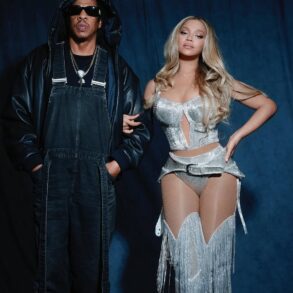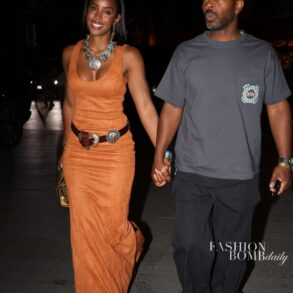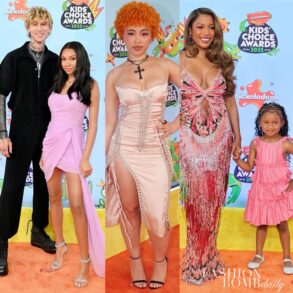This story is part of CNBC Make It’s Ditching the Degree series, where women who have built six-figure careers without a bachelor’s degree reveal the secrets of their success. Got a story to tell? Let us know! Email us at AskMakeIt@cnbc.com.
Krystal Fortune credits much of her success to impatience.
The Brooklyn native knew she wanted to work in fashion from the time she was old enough to speak.
“My parents have home videos of me on Christmas morning when I was 2 years old opening presents and naming all the department stores they’re from: Macy’s, Saks,” Fortune, 34, recalls. “I just loved everything to do with getting dressed up.”
In 2007, just a few weeks after Fortune graduated high school, she enrolled in the Art Institute of New York City’s associate’s degree program as a fashion design major.
“I didn’t want to wait four years to get a bachelor’s degree and start working in fashion, and my family couldn’t afford to help me pay for school, so it seemed like the best option,” she says.
At first, Fortune envisioned a career for herself designing clothes: She learned how to sew when she was 8 years old, stitching skirts, handbags and a dress for her senior prom.
That changed, however, after she took her first class in college. One of her first assignments was to design a shoe inspired by a famous period of art. Fortune created a black heel with a silver, curved back inspired by the clean, simple lines of a chair from the Bauhaus period, a German artistic movement from the early 20th century.
After acing that assignment, “my fate was sealed,” says Fortune. “I was going to be a shoe designer.”
Now, Fortune is a head footwear designer at Eastman Footwear Group, where she designs shoes for popular brands like J.Crew, Eddie Bauer and Kenneth Cole. After negotiating a raise in September, she now earns $100,000 a year, according to financial documents reviewed by CNBC Make It.
Here’s how Fortune built a six-figure career in fashion without a bachelor’s degree:
Getting her ‘foot’ in the door for a career in footwear design
Fortune landed her first fashion internship, working for Tommy Hilfiger, in 2008 during her second semester of college.
“I applied to every job I could find listed in the ‘fashion’ section of Craigslist,” she says. “I didn’t think twice about whether or not I was qualified or how competitive it would be, I just went for it.”
As part of her internship, Fortune was tasked with sorting thousands of color swatches, pulling samples for leaders in the design, marketing and manufacturing departments.
“That tedious work trained my eye to recognize and differentiate color, a skill that’s helped me throughout my career sometimes without me even realizing it,” says Fortune. “There are, like 100 different shades of yellow, and I can name almost any of them.”
Krystal Fortune says she turns to music and color for inspiration while designing shoes.
Photo: Krystal Fortune
Fortune also interned at women’s fashion label Thuy during New York Fashion Week while she was a student, working alongside their designers backstage to tailor outfits and coordinate fittings for the models.
After graduating from the Art Institute in 2009, she held a variety of fashion jobs in New York: She worked as a hosiery designer at outerwear brand Royce Too for a year, then at Skechers as an assistant retail manager for another 11 months before spotting an opening for an outerwear designer at Eastman Footwear Group on Craigslist.
While neither of her first two jobs after college was her dream job, Fortune says she was able to gain “invaluable work experience” at each by shadowing designers and taking advantage of on-the-job skills training, including practicing her CAD (computer-aided design) technique. CAD software is used in the design process to create 2D drawings or 3D models of shoes.
“Because it was an outerwear designer job, I wouldn’t be focused on footwear, I’d be doing accessories like jackets and umbrellas, but I saw ‘footwear’ in the company name and thought it’d be a good opportunity to get my foot in the door regardless,” says Fortune.
Although Fortune didn’t get the job, a recruiter from Eastman called her a few weeks later and offered her a different position, one that was more in line with her interests and experience: Hosiery designer.
As part of her role, she’d help train other designers on transferring their handwritten designs to digital software — a skill on Fortune’s resume that the hiring managers were impressed with.
“At that time, the fashion industry was rapidly changing, and brands were asking for digital designs in place of handwritten sketches,” she explains. “But a lot of the designers weren’t trained in the software needed to produce this.”
She started her first job at Eastman in April 2012, and within a year, transitioned to the footwear design team. Fortune says that staying up-to-date on her technical skills has helped her rise through the ranks — and in 2018, she became a lead designer.
Designing 75 shoes a month
Most of Fortune’s mornings at Eastman’s office in downtown Manhattan start the same — with music.
“I need a good playlist to get the creative juices flowing,” says Fortune, who adds that Nirvana and Beyoncé are on frequent rotation.
While most of her workday is spent sketching designs for sneakers, hiking boots, sandals, heels and other footwear, Fortune also spends a lot of time coordinating with Eastman’s manufacturing teams in China and experimenting with different materials — silk, snakeskin, leather — from the stockpile in her office.
“But it’s mostly finding inspiration to flow out of me and put it into a shoe,” she says. Fortune estimates that she completes anywhere from 50 to 75 designs on average each month. Each brand Fortune works with will give her basic parameters for what they’re looking for — a sneaker to add to a specific line, for example — but she has “a lot of creative freedom,” she notes.
After the designs are approved by the brand’s sales and marketing teams, Fortune works with Eastman’s production teams to ensure the design is properly executed. Once first samples of the shoe are finished, they’re sent to trade shows and stores’ showrooms to gauge consumer interest before being shipped to stores and posted for sale online.
The skills that have helped her succeed as a designer the most, she says, are proficiency in graphic design software such as Adobe Photoshop and Illustrator, time management, communication, and, of course, creativity.
“Since I work with so many different brands, I’ll often see men, women and children on the subway, on the street, even in line in front of me at a coffee shop, wearing my designs,” says Fortune. “That’s the best part of being a footwear designer: I get to see my work being worn, and enjoyed, out in the world.”
DON’T MISS: Want to be smarter and more successful with your money, work & life? Sign up for our new newsletter!
Get CNBC’s free Warren Buffett Guide to Investing, which distills the billionaire’s No. 1 best piece of advice for regular investors, do’s and don’ts, and three key investing principles into a clear and simple guidebook.
Check out:
25-year-old makes $200/hour without a bachelor’s degree: ‘I work less than 6 hours a day’
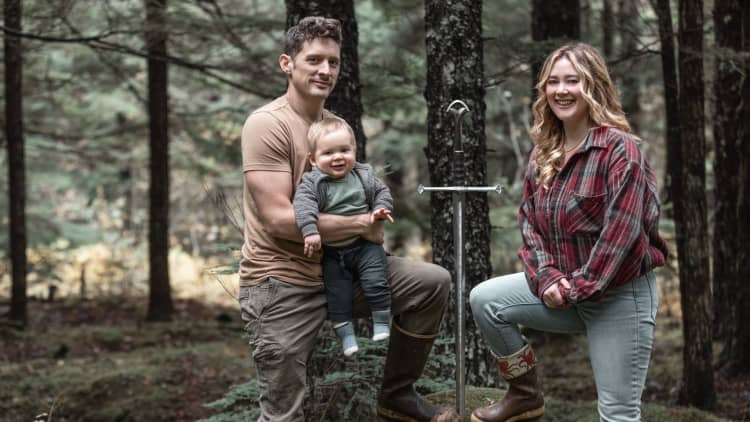
This post was originally published on this site be sure to check out more of their content.

